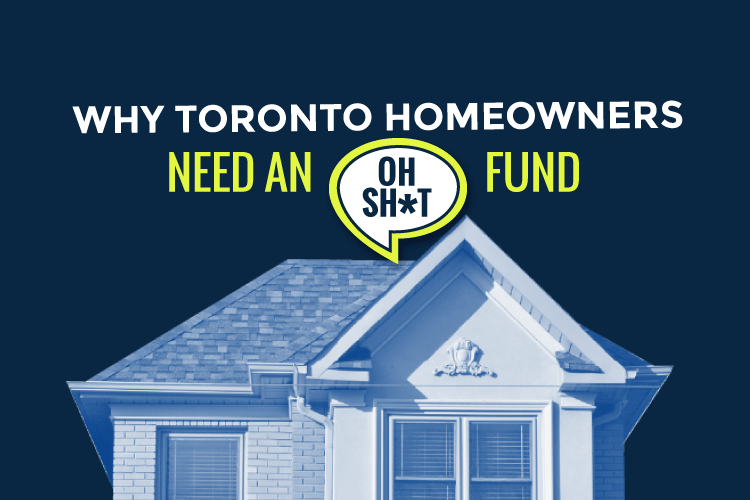When it comes to buying a new home, your first order of the day after signing the offer for your fresh digs should be to divert some of your hard-earned cash into an “oh shit” fund. You may think you’re dodging the extra expense of would-be maintenance fees had you bought a condo or townhome, but even with a house you should still be budgeting for home maintenance costs.
While it might seem like overkill to squirrel away a few extra dollars every month when you’re already pouring money into a hefty mortgage (not to mention property taxes and insurance), it can be a real lifesaver in the event of repairs down the line. As the average age of a home in Toronto tops out at 50+ years, you might find that you need to dip into your savings earlier than anticipated.
Step 1: Set a Minimum Amount
Conservative estimates indicate that you should aim to have approximately six months’ worth of income set aside in a rainy-day fund. While this might seem like a substantial sum, just remember, it’s all about baby steps. A good rule of thumb: try to put away the equivalent of 5% of your monthly mortgage into your emergency fund until you have a sufficient safety net to protect you in the event that you lose your job, need to take some time off of work or come face-to-face with an overhaul project.
Step 2: Budget for Repairs and Maintenance
As a homeowner, routine maintenance and unexpected repairs can range from unplugging a clogged sink to changing an air filter in the furnace to replacing a malfunctioning water heater or even a leaky roof. While some repairs are a quick-fix, others can chalk up to a jaw-dropping out-of-pocket expense. An emergency fund is essential to help you out of a bind without racking up a bucket load of debt. We suggest that you should budget 1% to 2% of your home’s value for home maintenance costs and upkeep every year.
Step 3: Consider Home Improvements
While home improvements are optional, it can really pay off to upgrade your home over time, particularly in terms of resale value. Renovating or remodeling can be an expensive undertaking, but if you budget for projects over time and carry them out when you find that you have a bit of a surplus to skim off the top of your emergency fund, you might turn a larger profit when you decide to sell your home.
While it’s fairly standard for first-time homeowners to use all of the assets at their disposable (TFSA, RRSP and non-registered accounts) to come up with a down payment, it’s important to start building your little nest egg back up as soon as possible to deal with any unexpected and/or budgeted costs and projects that might come up along the way.


